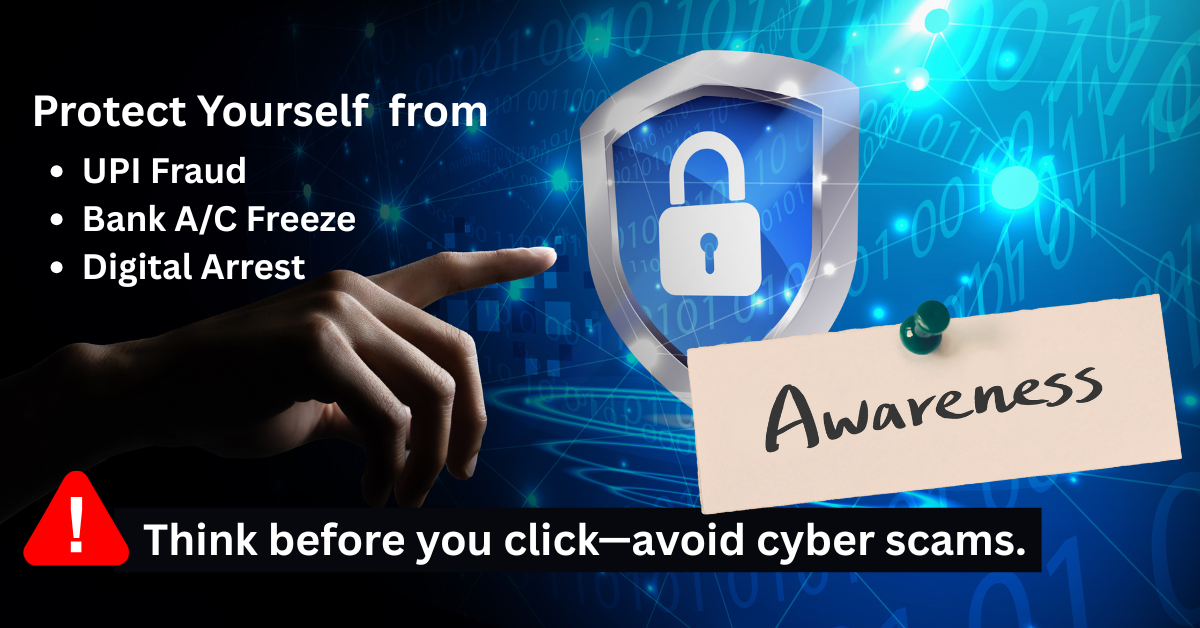In today’s hyper-connected world, cyber threats are evolving rapidly, and one of the most alarming trends is “digital arrest.” Unlike a physical arrest, a digital arrest occurs when cybercriminals take control of your devices, data, or online identity, restricting your access and demanding ransom or other malicious actions.
This blog will guide you on how to recognize, prevent, and overcome a digital arrest while maintaining cybersecurity best practices. Whether you’re an individual, business owner, or IT professional, these strategies will help you stay secure in an increasingly dangerous digital landscape.
What Is a Digital Arrest?
A digital arrest refers to a cyberattack where hackers gain unauthorized control over your digital assets, such as:
- Locking your computer or smartphone (via ransomware)
- Hijacking your social media or email accounts
- Blocking access to critical files or databases
- Manipulating IoT devices (smart home gadgets, security cameras, etc.)
Cybercriminals often demand payment (cryptocurrency is common) to release control, but paying doesn’t guarantee safety. Instead, the best approach is prevention, detection, and recovery.
Signs You’re Under a Digital Arrest
Before overcoming a digital arrest, you must recognize the warning signs:
- Ransomware Pop-ups – A message demanding payment to unlock your files.
- Unauthorized Access Alerts – Notifications of logins from unknown locations.
- Disabled Security Software – Antivirus or firewalls suddenly turned off.
- Strange System Behavior – Slow performance, unknown apps running, or files disappearing.
- Locked Accounts – Inability to access email, social media, or banking accounts.
If you notice these signs, act immediately to minimize damage.
How to Overcome a Digital Arrest: Step-by-Step Guide
1. Disconnect from the Internet
- Unplug your device from Wi-Fi/Ethernet to stop further data theft.
- If ransomware is active, disconnecting may prevent encryption spread.
2. Identify the Attack Type
- Ransomware? Check for encrypted files and ransom notes.
- Account Takeover? Look for password reset emails you didn’t request.
- Remote Access? Check for unfamiliar remote desktop sessions.
3. Use Backup to Restore Data
- If you have offline or cloud backups, restore your system to a clean state.
- Avoid paying ransom—only 8% of victims fully recover data after paying (Cybersecurity Ventures).
4. Scan and Remove Malware
- Boot in Safe Mode and run antivirus scans (Malwarebytes, Bitdefender, Norton).
- Use anti-rootkit tools if the infection is deep-seated.
5. Reset Passwords & Enable 2FA
- Change passwords for all critical accounts (email, banking, social media).
- Enable Two-Factor Authentication (2FA) to prevent future takeovers.
6. Report the Incident
- Individuals: Report to local cybercrime units (e.g., FBI’s IC3, Action Fraud UK).
- Businesses: Notify your IT team and consider a cybersecurity forensic audit.
7. Strengthen Security Post-Attack
- Update all software (OS, browsers, plugins).
- Educate yourself on phishing scams (a leading cause of digital arrests).
- Use a password manager and avoid reusing passwords.
Preventing Future Digital Arrests
1. Regular Backups (3-2-1 Rule)
- 3 copies of data, on 2 different media, with 1 offline backup.
2. Advanced Endpoint Protection
- Use next-gen antivirus (CrowdStrike, SentinelOne) with behavioral detection.
3. Zero Trust Security Model
- Verify every access request, even from within your network.
4. Employee Cybersecurity Training
- Phishing simulations and security awareness programs reduce risks.
5. Secure IoT Devices
- Change default passwords and disable remote admin access.
Conclusion
A digital arrest can be terrifying, but with the right knowledge, you can detect, respond, and recover effectively. By following proactive cybersecurity measures, such as regular backups, strong passwords, and employee training, you can drastically reduce the risk of falling victim.
Stay vigilant, stay informed, and share this guide to help others protect themselves from cyber threats!
🔒 Need professional cybersecurity help? Contact our certified expert today!
📢 Follow our blog for more cybersecurity tips and threat alerts.
